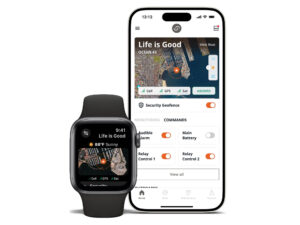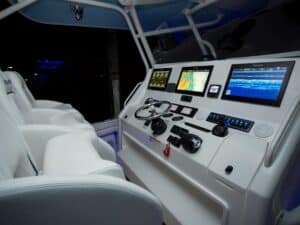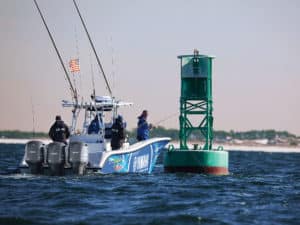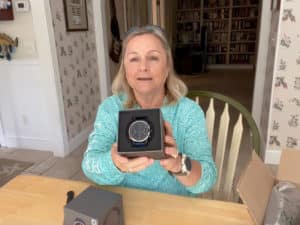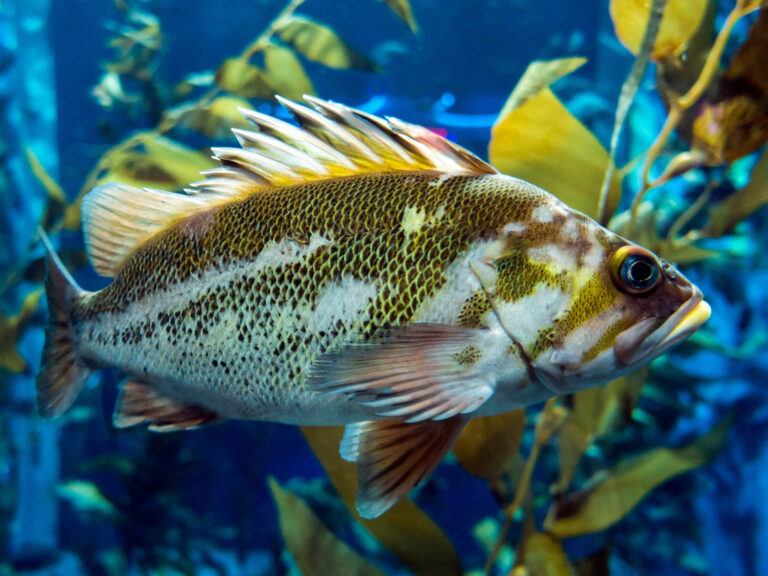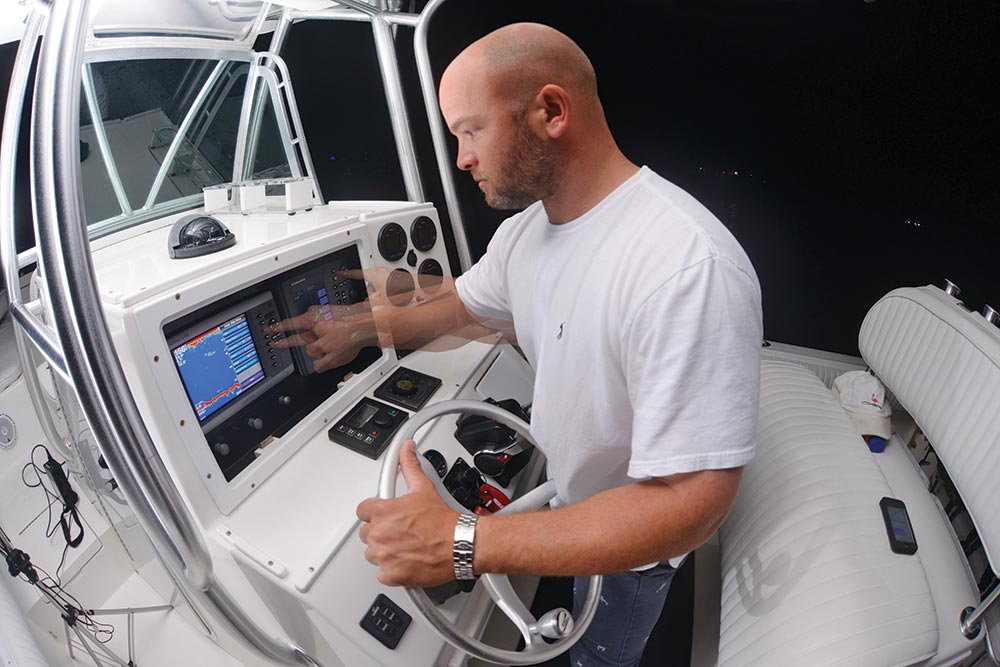
25 Amazing Fish Finder Features
A fisherman who avoids electronics is like an explorer who shuns maps. The fisherman rambles along, depending on real or imagined factors: his skill in reading the water, his cellphone reconnaissance and his historical perspective. But without at least a sounder, he remains relatively blind. He would gain — and potentially catch — so much more if he took a little time to learn and properly use the right tools.
Fish finders, particularly those harnessing the latest technology, give anglers a clear eye to what’s underwater. New chirp and side- or down-imaging functions can almost take a picture of the water column around the boat. To gain better perspective on just what the best marine electronics can provide, I spoke with six manufacturers and asked them to name the coolest features they program into their fish finders. From those, I culled duplicates and selected 25; companies are listed alphabetically.
Furuno
Furuno Rezboost
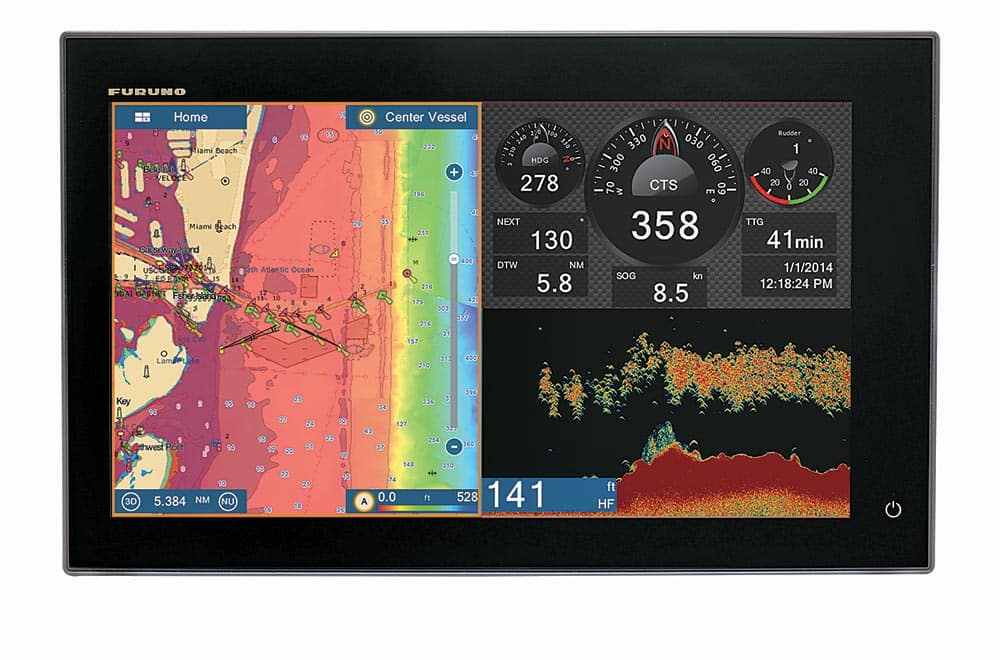
When Furuno introduced its new NavNet TZtouch2 multifunction displays at the Miami boat show in February, the company debuted a feature called RezBoost. RezBoost is a piece of software that increases the sharpness of sonar targets four to eight times, using a regular 50/200 kHz transducer. Chirp technology makes targets seven to nine times crisper but employs a more robust transducer, Furuno says.
“If you’re retrofitting, you don’t have to pull your transducer and reglass a new chirp one” to take advantage of RezBoost, says Jeff Kauzlaric, Furuno advertising and communications manager. “So that saves on cost.”
(Note that because of chirp’s frequency sweep, it does pick up and display more targets.)
Furuno Bottom Discrimination
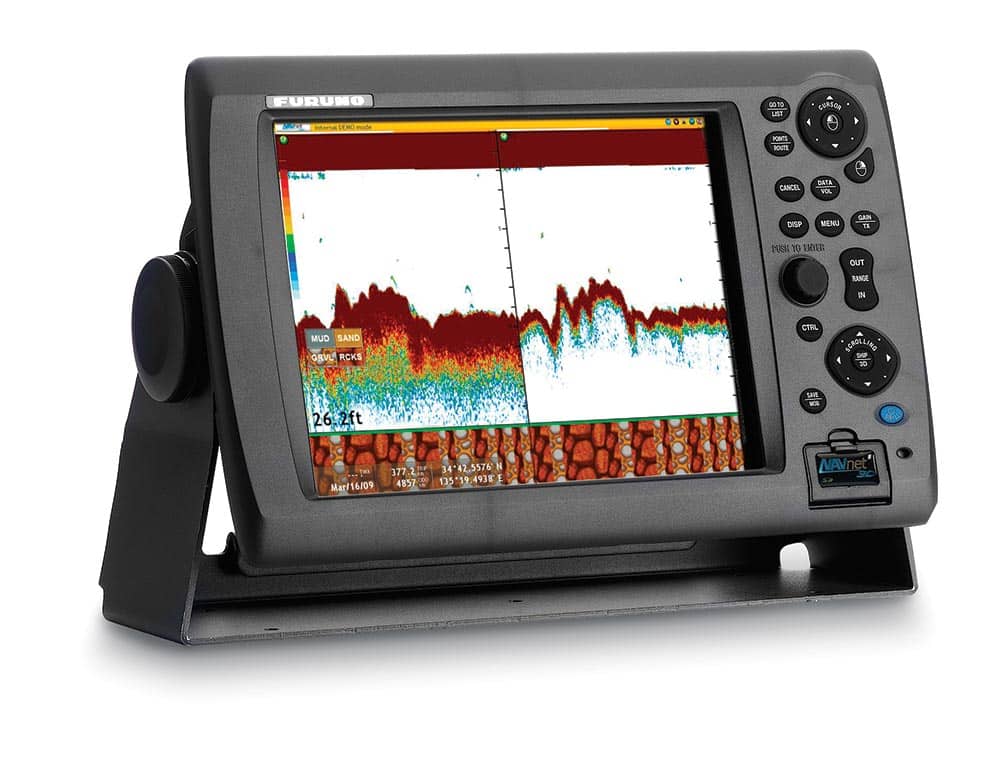
This feature — available on several FCV and GP units, and on NavNet 3-D and NavNet TZtouch series units — breaks down the seafloor makeup into four categories: mud, sand, gravel and rock. The units analyze the hardness, or the strength, of the return to determine the probable makeup of the bottom.
Furuno says its engineers have even dropped cameras to the bottom to ground-truth, if you will, the analysis in real time. “It’s good, obviously, for fishing to see what kind of bottom is below, but it’s also good for anchoring,” Kauzlaric says.
Bottom Discrimination works with a wide range of transducers but not all.
Furuno Post-Gain Processing
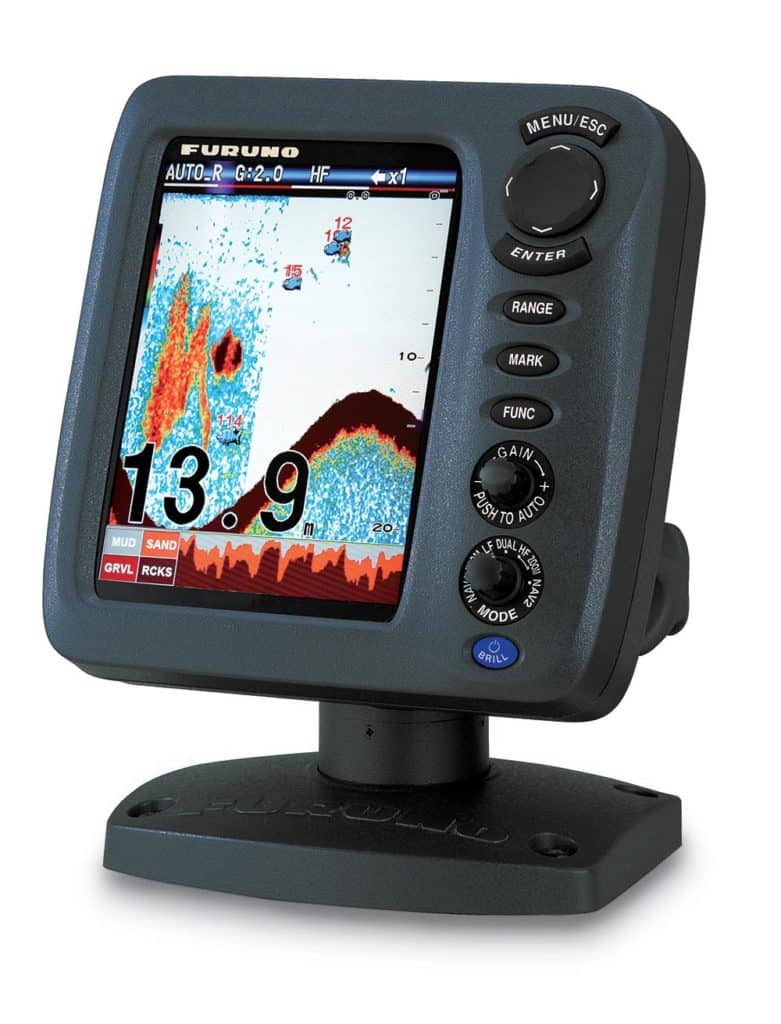
With post-gain processing, you dial in the clarity of the display so you can see more targets and eliminate clutter. Not only does it change the view going forward, but it also changes the history at the same time. That allows you to see the recent past and more closely check the ground you just covered.
“In the past, you had to wait until the unit repainted the entire screen to see the changes. This takes the history and applies the updated gain to it,” Kauzlaric says.
Post-gain processing is available on stand-alone fish finders, including the FCV 627, 587, 295 and 1150, and the GP 1670F and 1870F units.
Furuno History Scroll Back
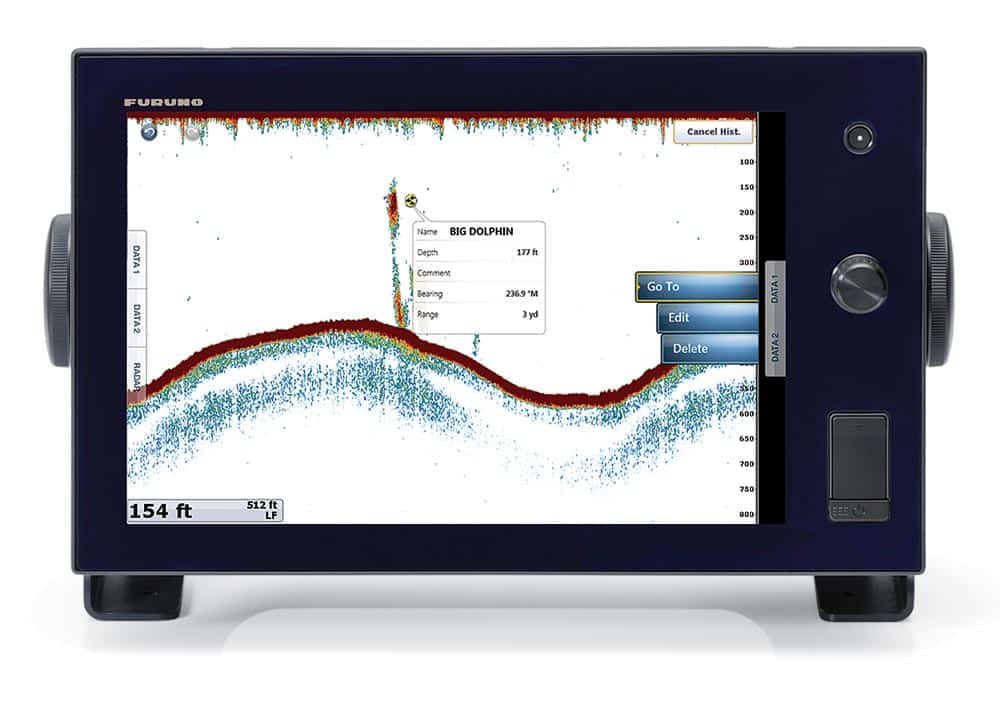
This feature allows an angler to use the touch screen to scroll back through the sounder’s history. Depending on the update rate you set for your sounder, you could see five to 15 minutes of adjusted history.
“This is useful if you’ve gone over certain structure or perhaps marked fish and want to go back to drop a mark or point on the fish-finder screen,” says Kauzlaric. “That produces a mark or point on the chart plotter as well.”
History Scroll Back comes on NavNet TZtouch and TZtouch2 units.
Furuno Frequency Slewing
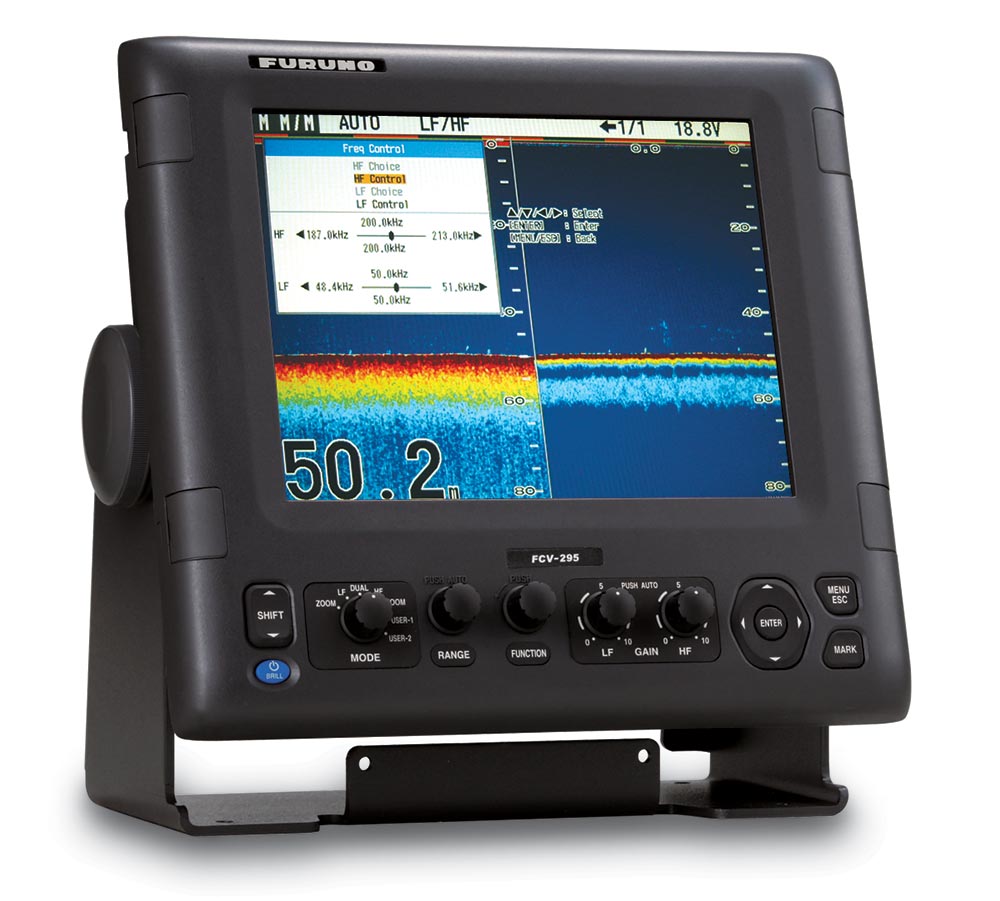
On higher-end sounders, such as the FCV 295 and 1150, anglers can fine-tune the emitted frequency to find the sweet spot. When such a unit is paired with a 50/200 kHz transducer, for instance, you could dial that up to 52 kHz to find the clearest returns. The frequency-adjustment range can be 4 to 5 degrees or more. When the range is set during installation, it can be altered to suit your fishing needs.
In general, Furuno suggests lowering frequency to increase the target-detection range and increasing frequency to improve resolution.
The FCV 1150 also can connect to a network and, in theory, send the same picture to other NavNet or TZtouch units on board.
Garmin
Garmin Panoptic LiveVü
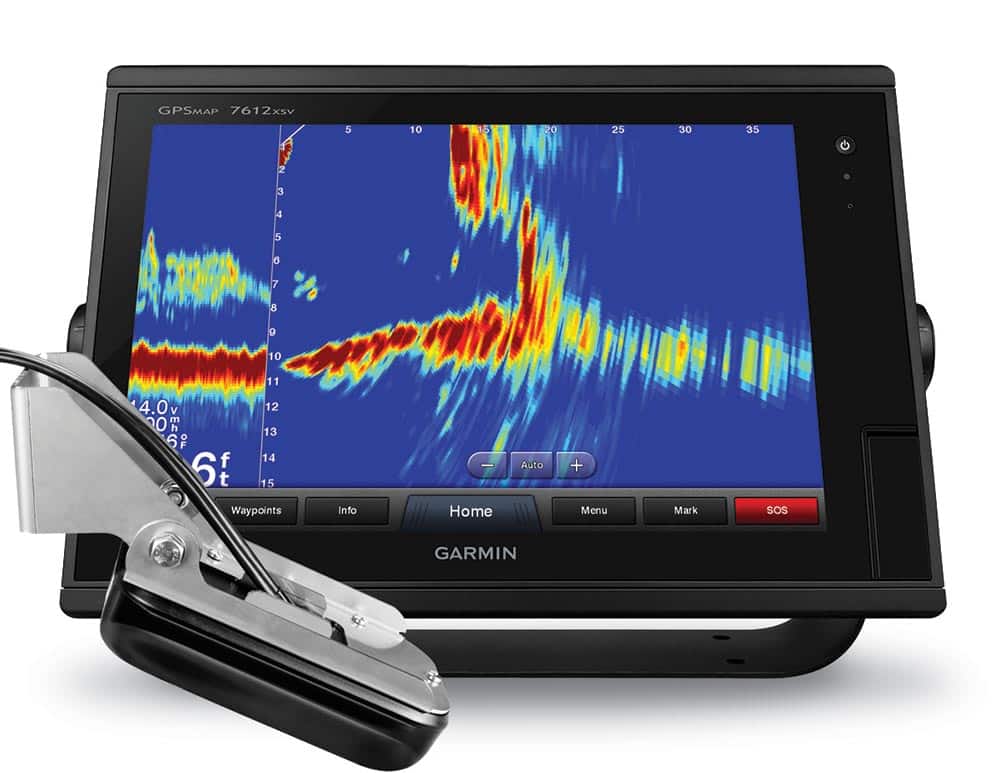
Unlike anything on the recreational marine market, Garmin’s Panoptix all-around transducers — introduced at the Miami boat show in February — use phased-array multibeam sonar and emit many more pulses than traditional sonar. With more elements in the transducer, compatible Garmin units can send and receive more data. The technology sweeps the water column. The Panoptix transducer you choose — forward or down — determines the directional cone of coverage.
The LiveVü feature shows you a live, videolike scene of where a fish is relative to the boat in real time, not where it was when you passed over it. “Current sonar is a snapshot in time. It’s history, so by the time you see it, it’s old data,” says David Dunn, director of sales. “LiveVü updates in real time. You see a fish swim out of the beam.”
In this view, you can turn on or off echo trails to tell the difference between moving and nonmoving targets, Dunn says.
Garmin Panoptix RealVü 3-D
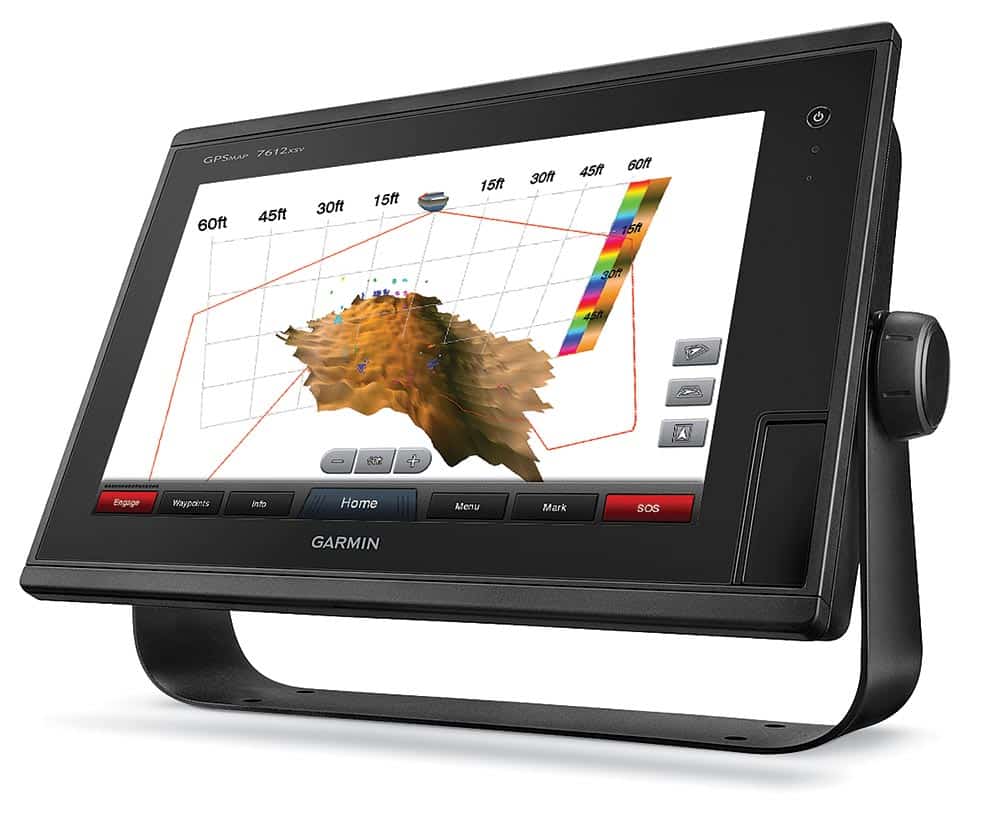
This feature paints a picture of the bottom in real time. Unlike with traditional sonar, Panoptix RealVü 3-D returns that live signal even if the boat is still. If you’re fishing over a wreck, for instance, Dunn says, it will update the whole time whether you’re anchored or moving.
You can spin the screen you’re seeing on the display a full 360 degrees to project an unlimited view of the water column. “You know where the fish is in the water column and whether it’s on the port or starboard side of the boat.”
Garmin Four-Way Viewing
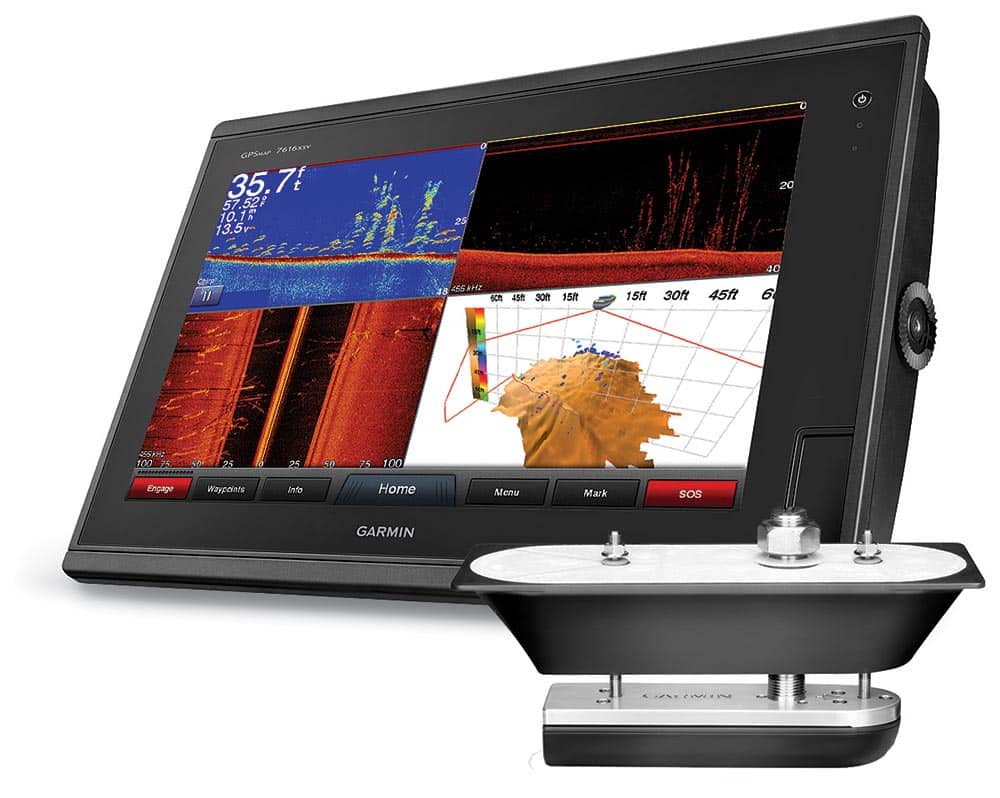
Though this feature is not exclusive to Garmin, the ability to split the sounder screen four ways — showing traditional, DownVü, SideVü and even Panoptix all at the same time — gives anglers all the data they could possibly want about what they’re seeing around the boat. Garmin’s 7600 and 8000 series units provide this capability, though two transducers would be necessary.
Garmin Full-Band Chirp
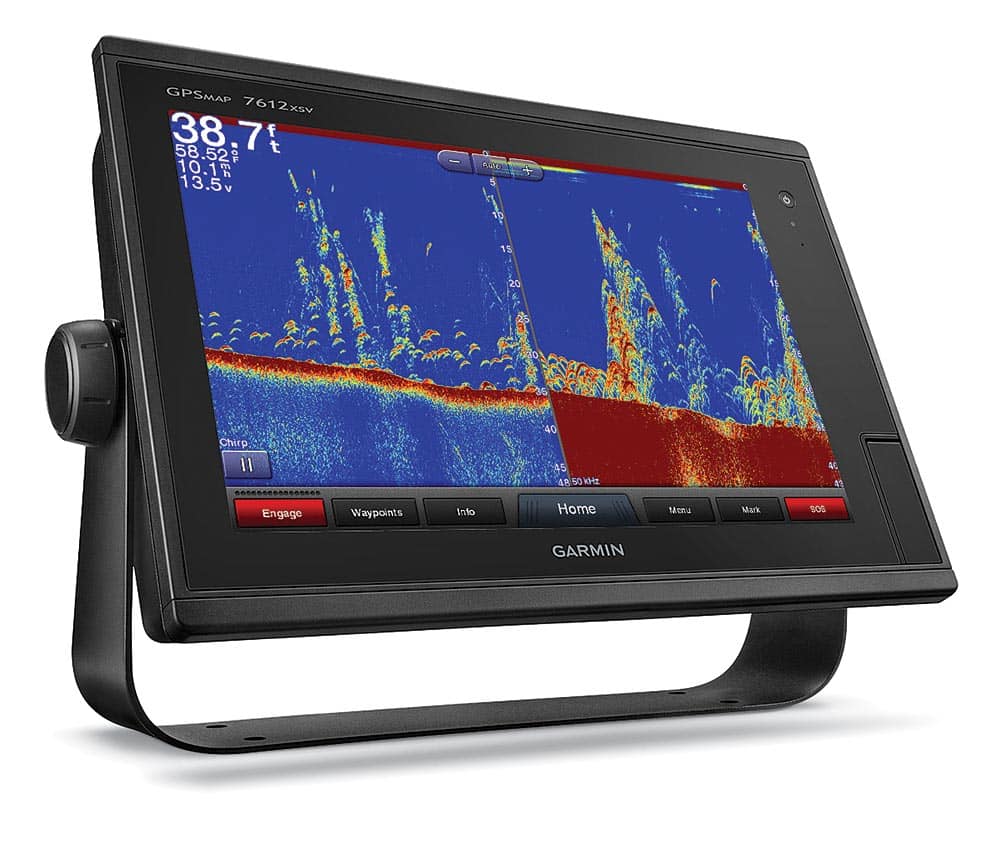
Garmin sources hear a lot of customers’ misconceptions about chirp. In some cases, chirp is confused with side- or down-imaging sonar. In other cases, some products labeled chirp provide very small bandwidth frequency ranges. Garmin chirp products emit signals through the entire spectrum of frequencies available (from 25 to 210 kHz), depending on the transducer.
Humminbird
Humminbird Side-Imaging Waypoints
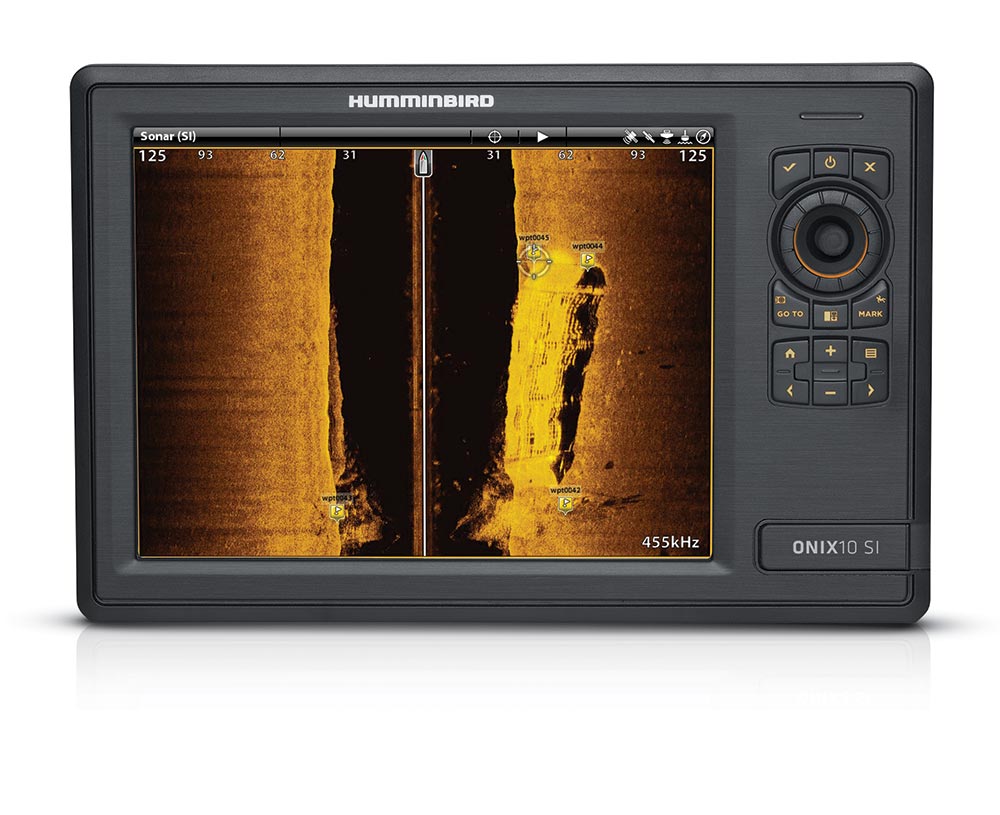
“When I go out, and I’m throwing baits around a bridge piling, I can mark a waypoint on my side-imaging screen that shows me which piling the tarpon might be hanging on during incoming tide or on the outgoing,” says Jeff Kolodzinski, Humminbird brand manager. “Another example is you could mark all four corners of a barge.”
With Humminbird’s new ONIX and ION touch-screen units, marking a waypoint is as simple as touching the screen. With other units, you move the cursor to the object and hit the mark button.
To take it one step further, you can quickly take a screen snapshot to show the depth of the tarpon or other fish on a particular tide stage.
Humminbird 360 Measuring
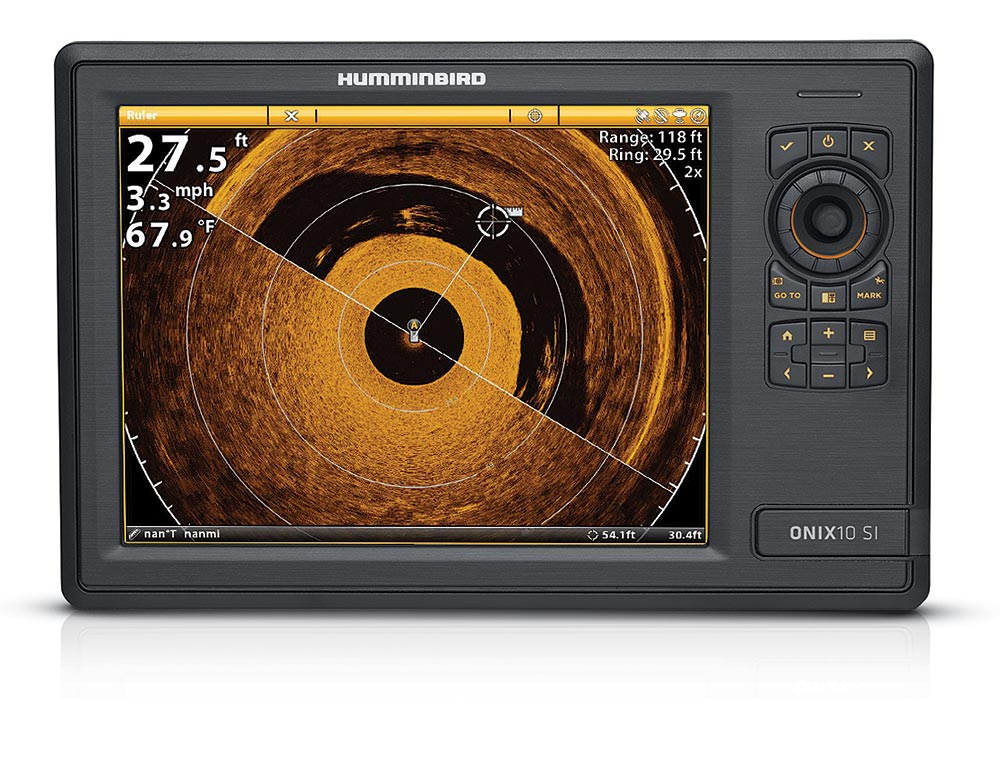
When using Humminbird’s 360 Imaging sonar product — which sweeps a full circle within its range — an angler can move the cursor on the display to a fish or to a piece of structure. Once the cursor is placed, a small window pops up to tell you exactly how far that target is from the transducer and the target’s relative direction.
“Some guys are using that for cast-netting baitfish,” Kolodzinski says. “It really lets you know where to cast or throw for direction and distance.”
All of Humminbird’s side-imaging units, the down-imaging 900 and 1100 series, and the ONIX and ION are compatible with 360 Imaging.
Humminbird Autochart Live
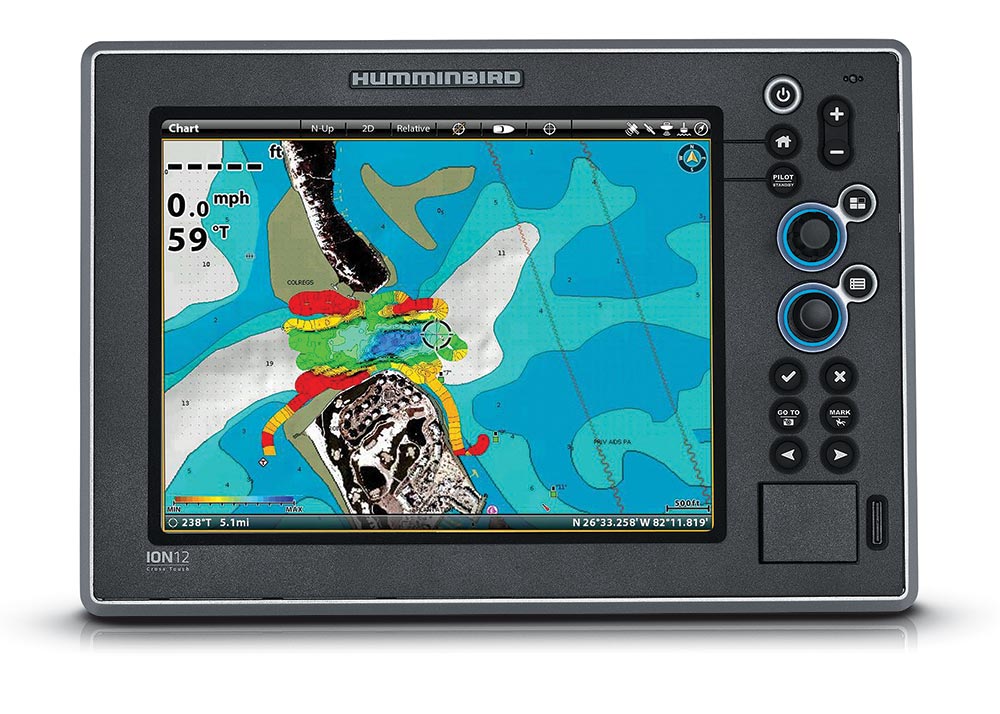
This feature allows you to capture and record live, real-time sonar readings. Rather than depend on depth numbers and contour lines on dated electronic charts, you can create your own detailed view of the bottom at a favorite fishing hot spot — and keep it all to yourself if you’d like.
Even subtle changes that evolve during a season can be recorded and used, including slight depressions or humps formed by shifting sand. When you start to record the sonar track, you can watch the display create the map or let it run in the background.
Eight hours of recording can be saved to the unit’s hard drive. If you plan to keep more locations, purchase a ZeroLines SD card for $110. If you choose, you can share the SD card with a friend — or not. Autochart Live is available on ONIX and ION units.
Humminbird i-Pilot Link Interface
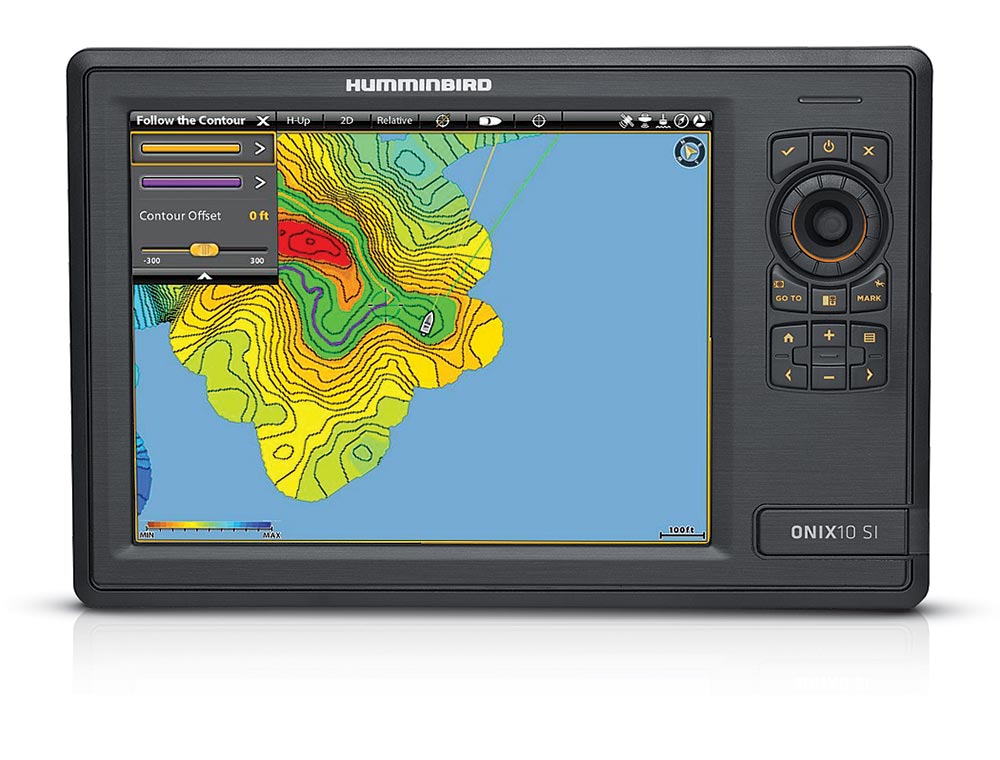
Once you have the detailed contours of your fishing site mapped out with AutoChart Live, you can use i-Pilot Link to stay in a selected depth, follow an oyster reef or work a channel edge with a Minn Kota trolling motor.
“Want to catch redfish in 6 feet of water while you hold in 10 feet? You tell your sonar computer, ‘Keep me in 10 feet of water,’ and it just keeps you at that depth all around that contour,” says Kolodzinski. “It gives you incredible boat control. It’s like having a chauffeur.”
This feature is available on all Humminbird multifunction displays that have Ethernet capability.
Lowrance
Lowrance Chirp Selectability
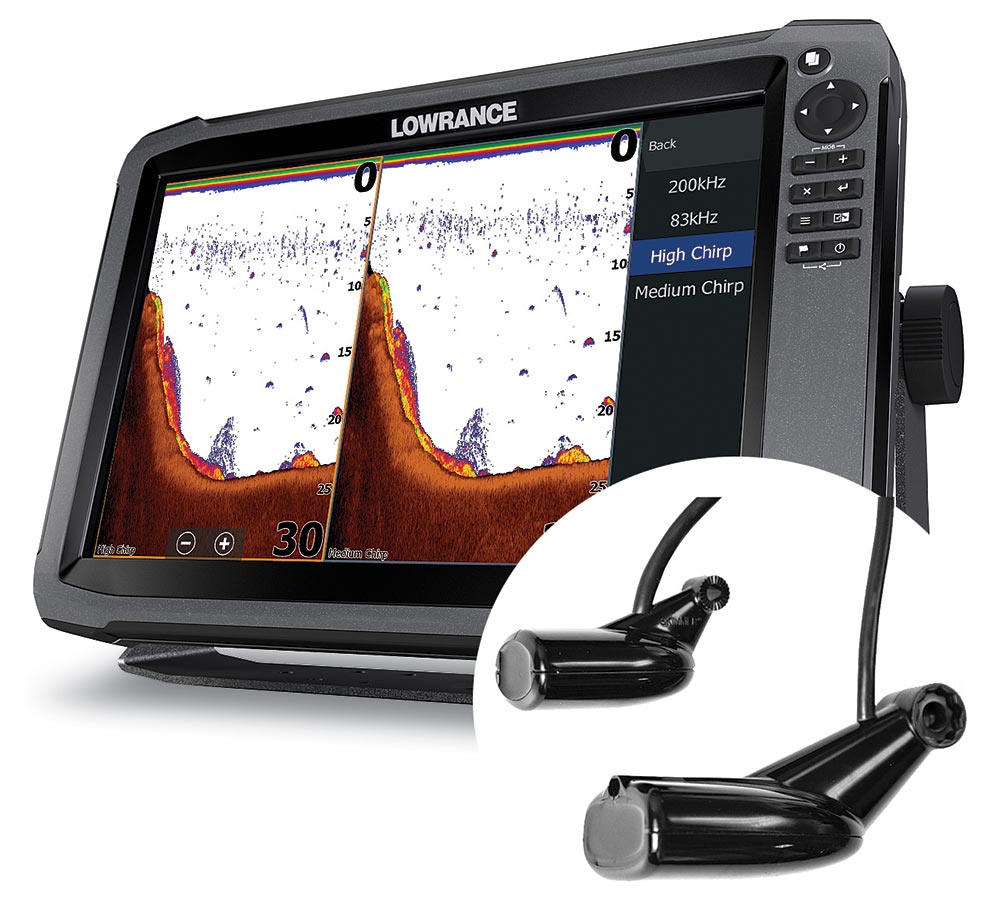
With Lowrance’s HDS Gen3, you can chirp through most transducers. With an 83/200 kHz transom-mount transducer, you can achieve medium and high chirp. With a 50/200 kHz skimmer, you’ll get low and high chirp. However, the frequency spread surrounding those numbers will be tighter than with a transducer such as Airmar’s B150, which is made to sweep a broader frequency band.
Lowrance StructureMap
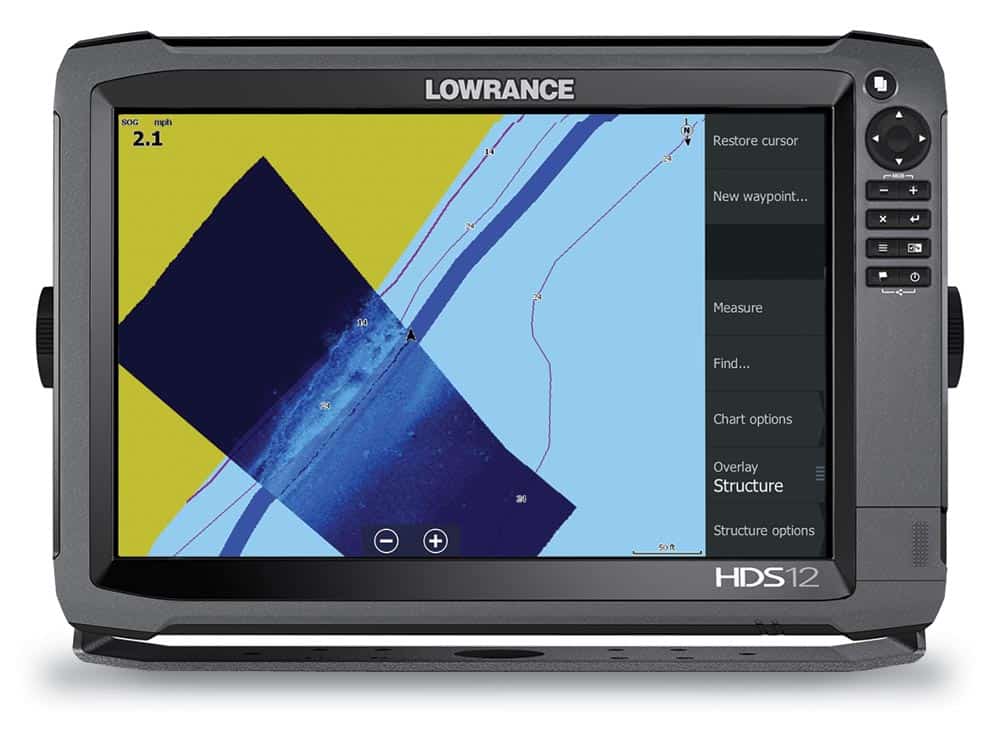
StructureMap allows you to see bottom topography in real time and overlays that on a chart, all using Lowrance’s StructureScan sonar. As StructureMap builds your unique view, you can mark waypoints or even divide the view by recording the right side of the boat on one display monitor and the left side of the boat on a second display for different perspectives. StructureMap also records buoys and pilings that might hold fish, and would normally not show on a retail electronic chart.
Lowrance Bottom Coloring
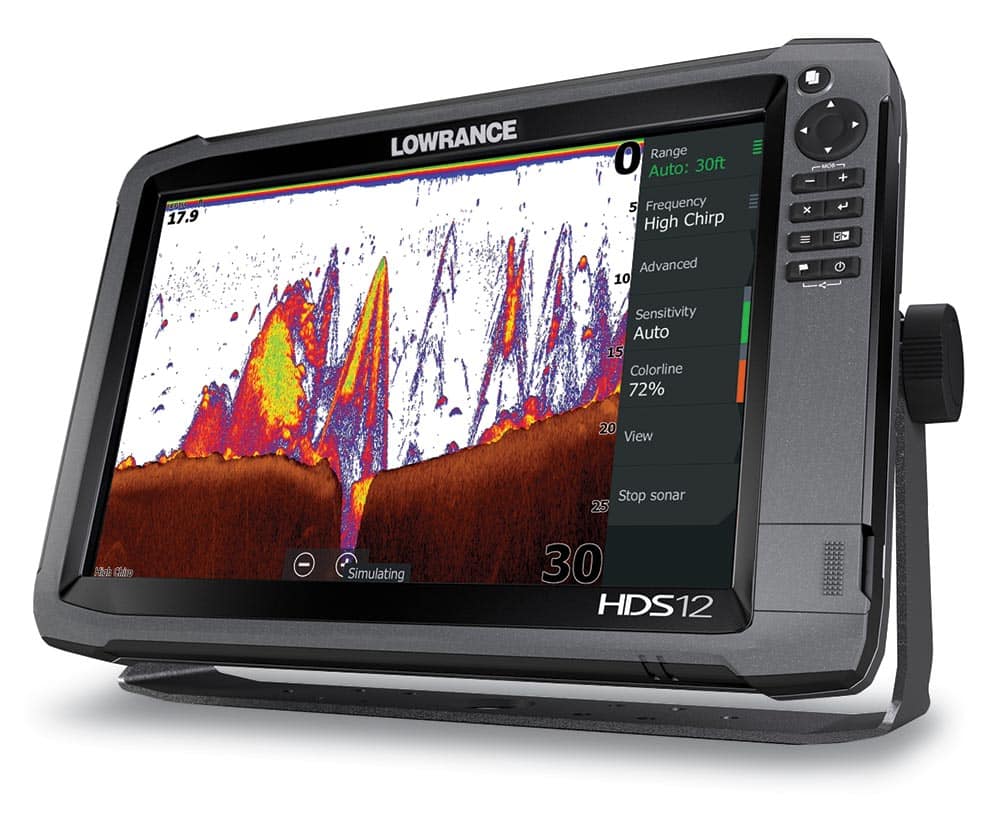
Whether you prefer a white or a blue background on your sounder screen, Lowrance HDS Gen3 units paint the bottom brown in contrast. The targets appear as red, blue, yellow, orange and green. When you zoom in on the bottom, the contrasting brown color helps better define fish from structure.
Lowrance Track Back
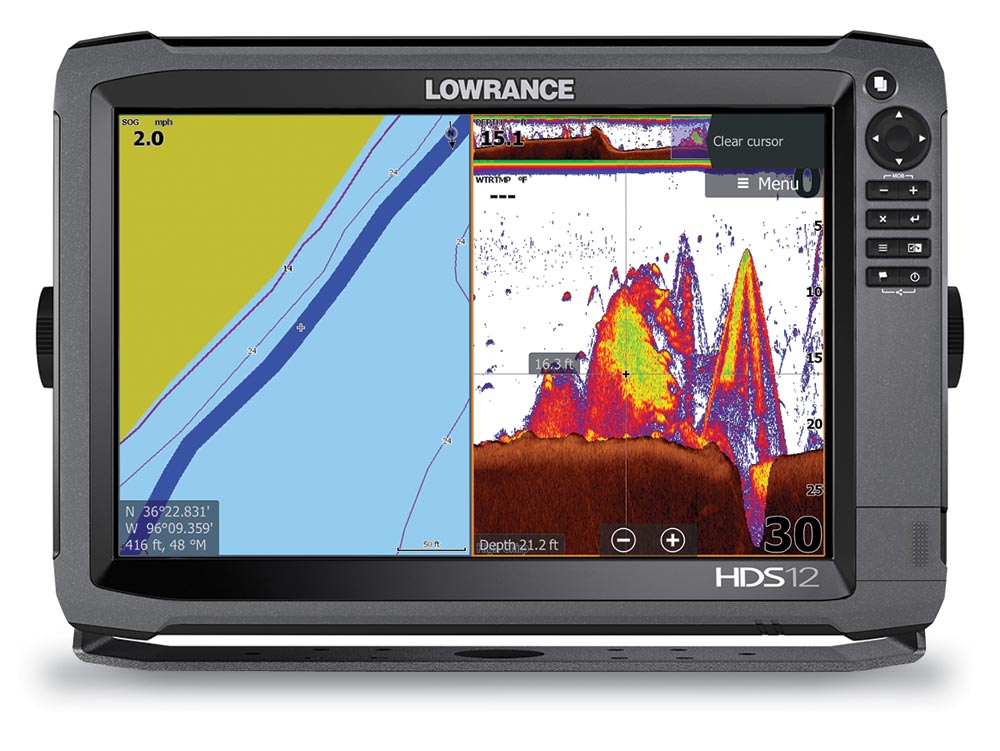
First to offer this feature, Lowrance allows anglers to scroll back on their touch-screen units to see about 15 to 20 minutes of sounder memory. They can drop a waypoint on a particular fish or bait school, and if they have an autopilot networked into their navigation system, they can immediately go to the cursor. Track Back works on traditional, chirp, and StructureScan HD SideScan and DownScan views.
Raymarine
Raymarine Fish-Target Enhancement
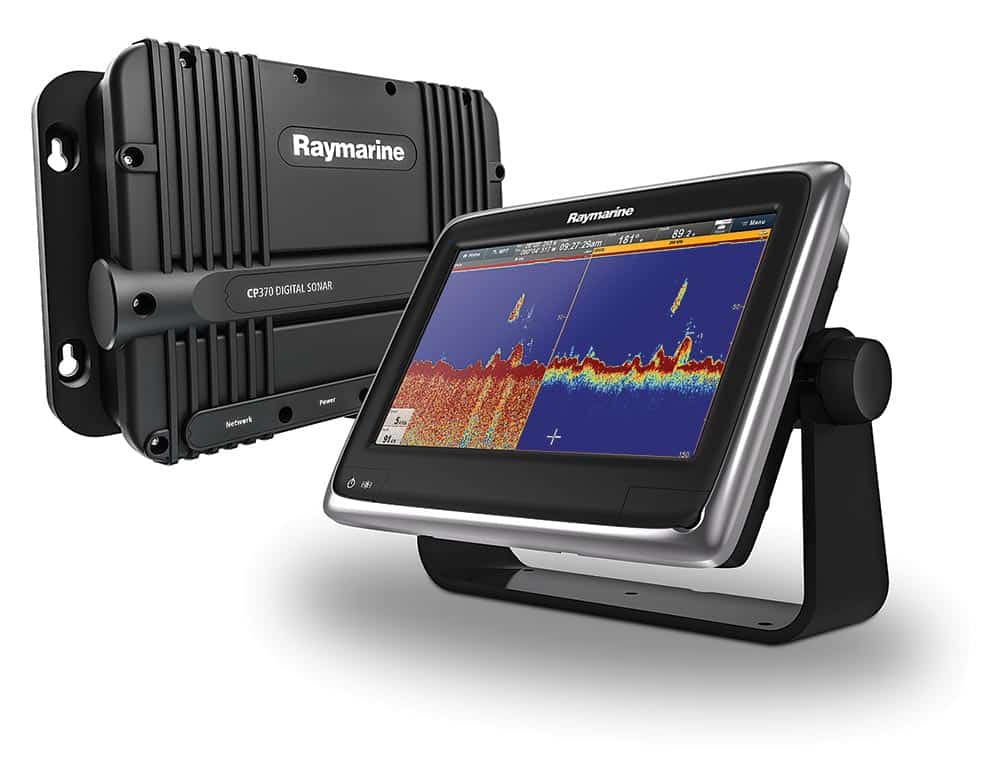
Raymarine’s new CP370, CP470 and CP570 black-box sounders are capable of increasing fish-target intensity without amplifying noise. Normally when a captain adjusts the gain, TVG or color gain on his sounder, the noise within the water column amplifies or fades at the same rate as the fish or bait targets.
But by establishing a baseline that continues to run in the background while gain is tweaked, Raymarine can let a captain sharpen targets while keeping the rest of the screen uncluttered.
Raymarine TruZoom
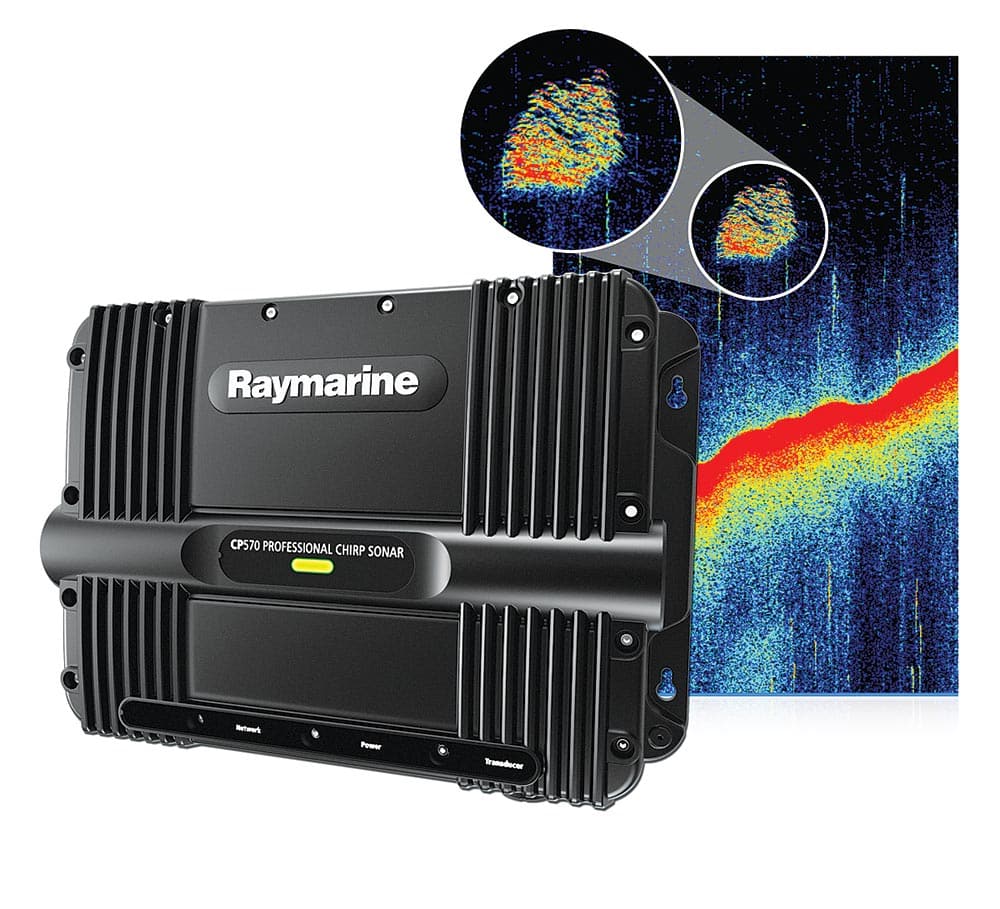
Available in the current CP450 C and in the new CP470 and CP570 chirp black-box sounders, TruZoom exploits the fact that chirp offers higher-resolution imagery than what a display’s LCD panel can show. “The chirp sonar signal is high-def, but it’s sent to a lower-def screen,” says Jim McGowan, Raymarine marketing manager.
“When you want to enlarge an area on the sounder screen for more detail, you zoom in. Most sounders take the pixels and stretch them out. What TruZoom does, it requests more data on that area. So you’re not just enlarging the pixels, you’re bringing more pixels into the display.”
Raymarine Adjustable SideVision Transducer
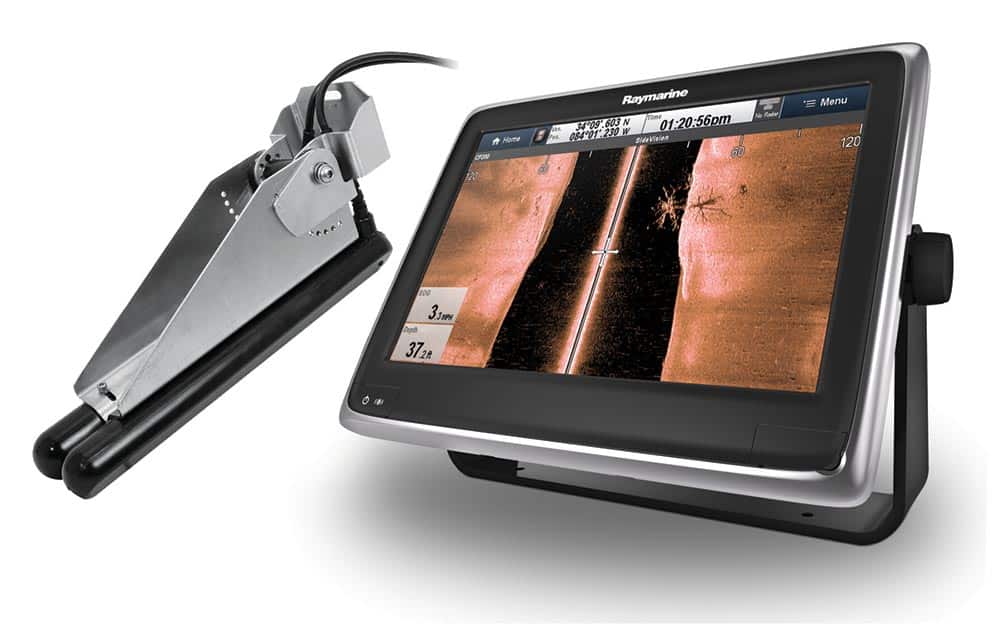
Currently unique among side-imaging or -viewing transducers, Raymarine’s CP200 twin transducer arrays are adjustable up and down. Saltwater anglers, in particular, can optimize the transducer for deeper or shallower fishing.
“People think of SideVision as a freshwater or flats thing. But it works very well in deep water,” McGowan says. With an adjustable set screw, you can angle the two transducer arrays to point more downward or out to the side.
“Our SideVision can see out to 600 feet in both directions (1,200 foot total). If you angle the arrays down at their lowest setting (about a 30-degree down angle), you can potentially see about 600 to 700 feet down. You’ll have a small blind spot near the surface — you might cut off maybe the first 40 to 50 feet of the water column.”
Raymarine Wi-Fish
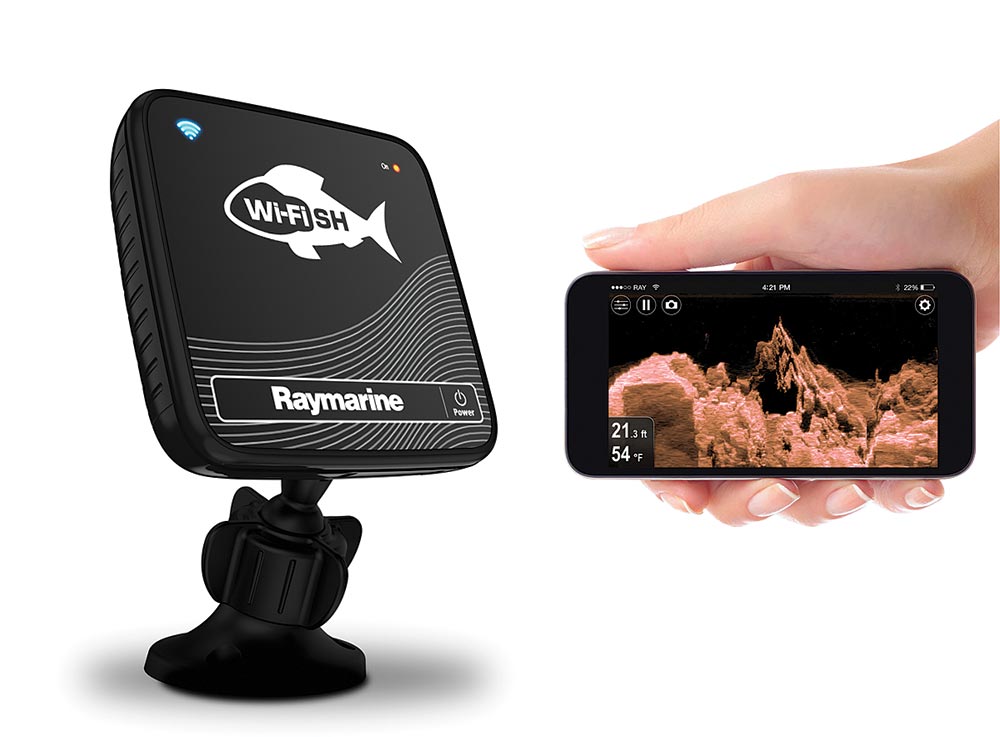
Wi-Fish takes a small black-box sounder, a transom-mount transducer, and a smartphone and tablet app, and produces sonar for mobile devices. “In addition, everything that you see on the phone or tablet (which is your monitor) is instantly shareable on social media,” McGowan says. “You can take screen snapshots and upload them from your boat to your Facebook or Instagram account.
“You can also pause the app and scroll back in your history (about 60 seconds) to get that image you might have missed.”
Kayak and micro-skiff fishermen can use Wi-Fish by simply mounting the black box in a storage compartment and either using a bracket to mount the transducer or cinching it through a scupper on a kayak.
Simrad
Simrad Scroll Speed
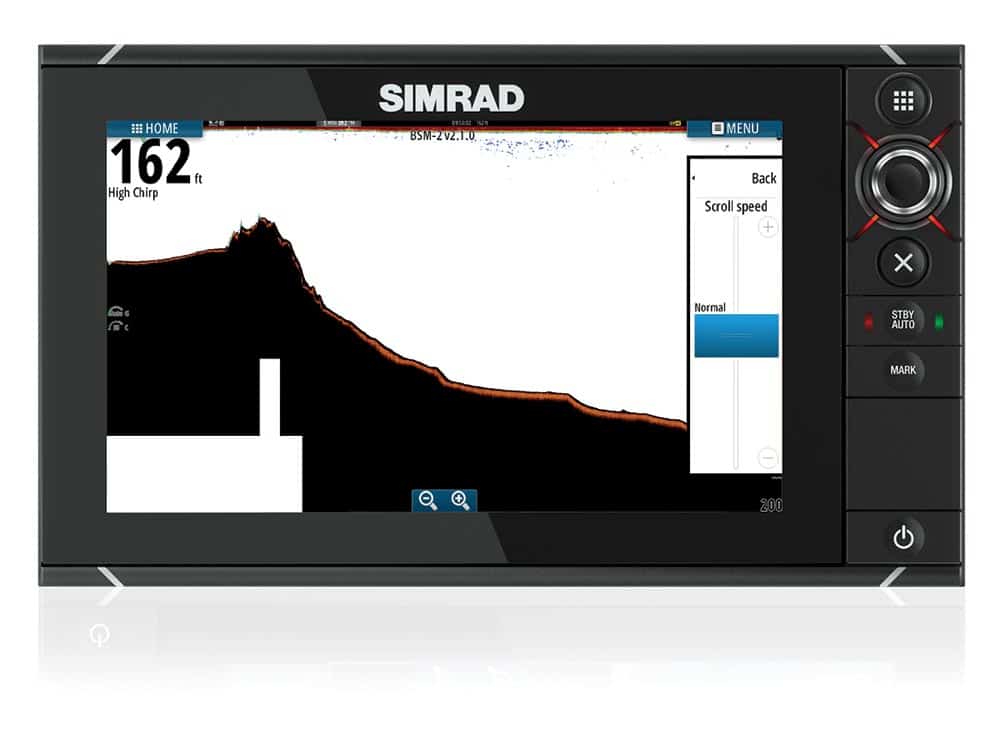
Most sounders allow the user to alter scroll speed, but it’s a feature few anglers know about or use. In deeper water, the ping rate slows because the sound takes longer to reach the bottom and return, says Matthew Laster, Simrad sonar product manager. Speeding up the scroll speed enlarges the targets on the screen.
“Tuna guys turn up the scroll speed and focus on the upper 300 feet of the water column, and that makes the fish arches really big,” Laster says. “Bottom fishermen can turn up the speed and swordfish targets will appear bigger.”
Simrad Time-Varied Gain
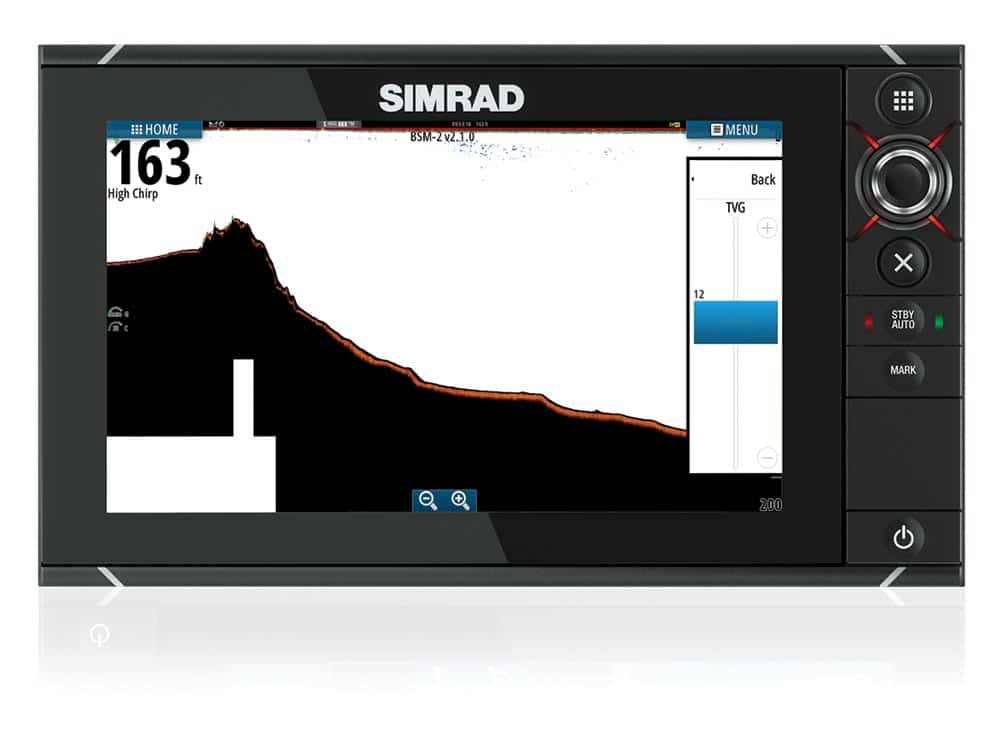
Adjusting the TVG changes the gain throughout the water column. Normal gain modifies gain in the whole water column all the time. TVG starts at the top. The more you dial up TVG, the farther down in the water column the filtering extends.
If you see a lot of noise at the surface, for instance, you can turn up TVG and get rid of some of that, Laster says.
Simrad ForwardScan
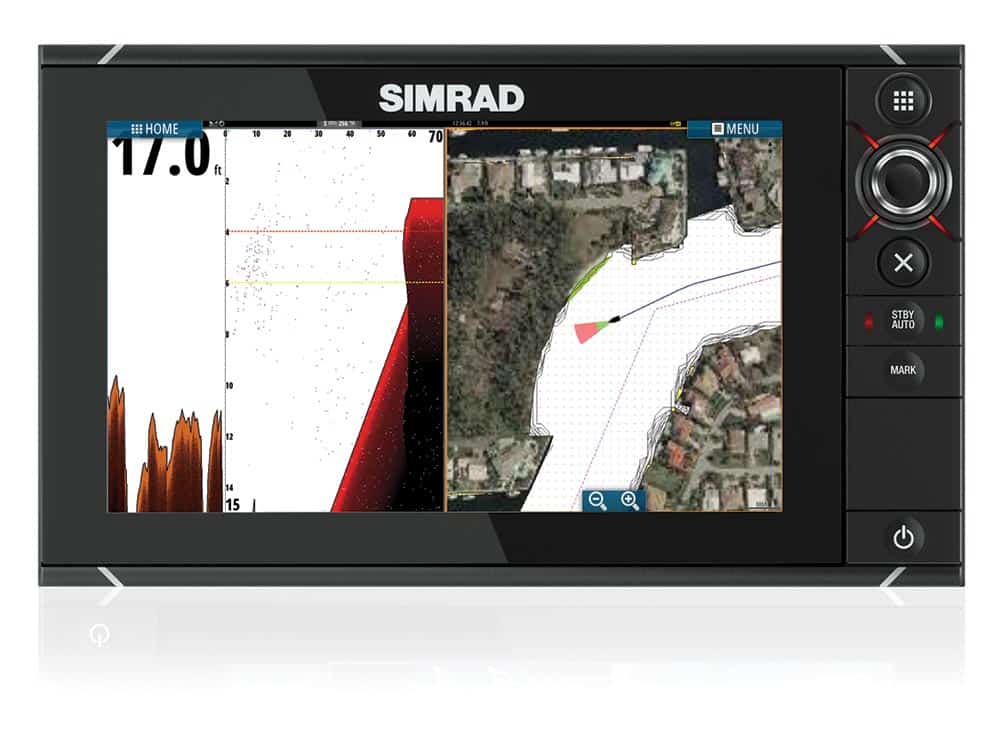
A new feature for Simrad, ForwardScan employs a unique transducer to allow captains to watch the seascape ahead of the boat. Particularly helpful in poorly charted areas such as remote Bahamas or Mexico waters, ForwardScan can keep you off the shoals.
By turning on “data points,” captains can also discern bait schools and fish.
Simrad DownScan Overlay
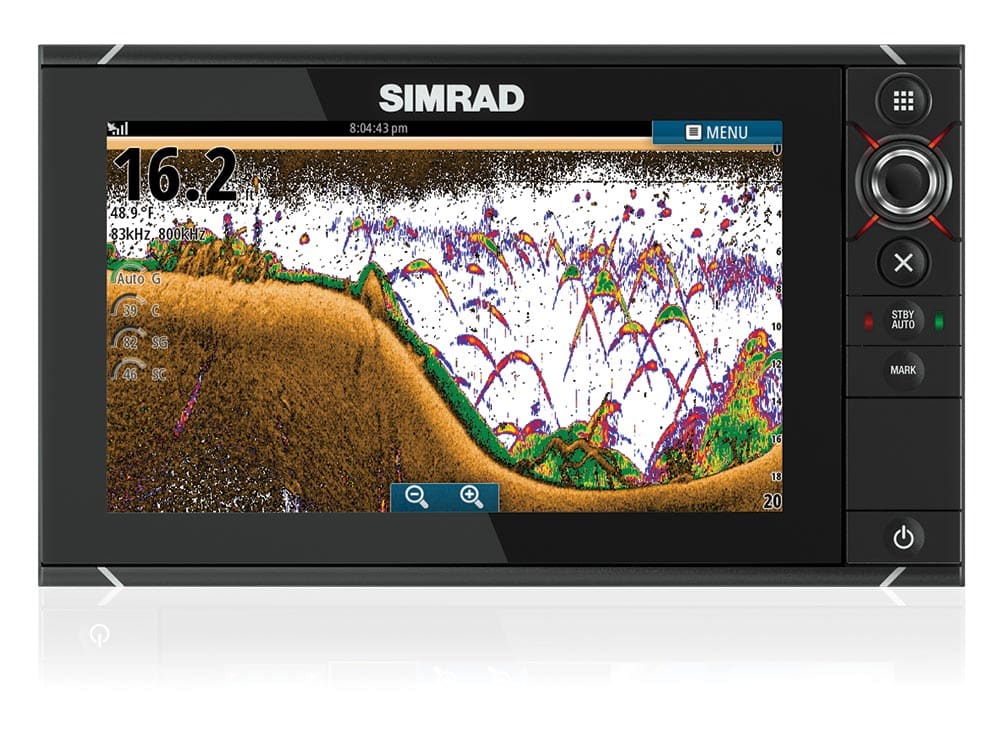
Simrad’s DownScan technology provides picturelike images of what’s below the boat. Units equipped with the technology also allow captains to overlay that view on top of a traditional or chirp sounder screen. In most cases, other brands allow only side-by-side or top-and-bottom display of the two views.

